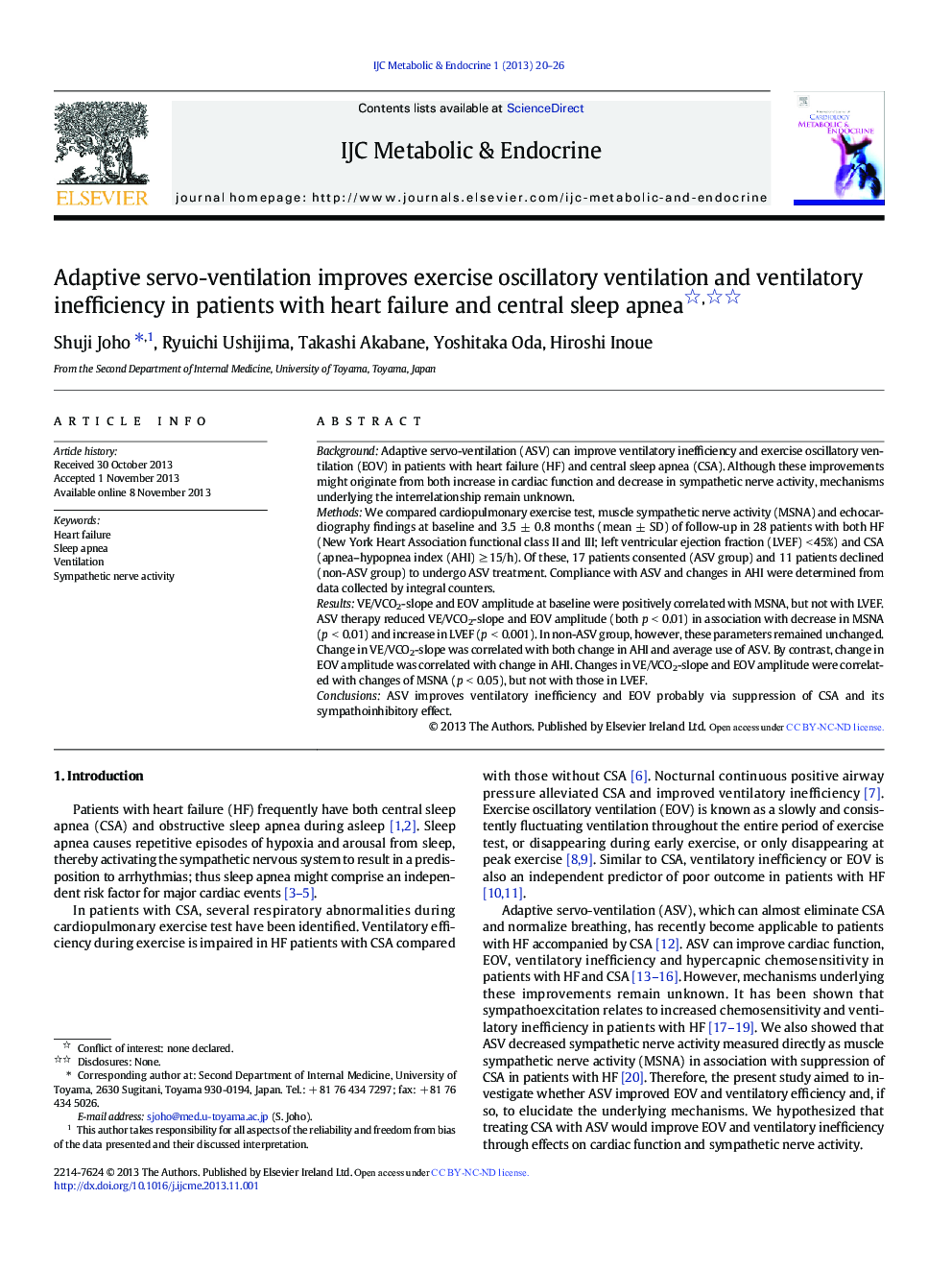| Article ID | Journal | Published Year | Pages | File Type |
|---|---|---|---|---|
| 2927308 | IJC Metabolic & Endocrine | 2013 | 7 Pages |
BackgroundAdaptive servo-ventilation (ASV) can improve ventilatory inefficiency and exercise oscillatory ventilation (EOV) in patients with heart failure (HF) and central sleep apnea (CSA). Although these improvements might originate from both increase in cardiac function and decrease in sympathetic nerve activity, mechanisms underlying the interrelationship remain unknown.MethodsWe compared cardiopulmonary exercise test, muscle sympathetic nerve activity (MSNA) and echocardiography findings at baseline and 3.5 ± 0.8 months (mean ± SD) of follow-up in 28 patients with both HF (New York Heart Association functional class II and III; left ventricular ejection fraction (LVEF) < 45%) and CSA (apnea–hypopnea index (AHI) ≥ 15/h). Of these, 17 patients consented (ASV group) and 11 patients declined (non-ASV group) to undergo ASV treatment. Compliance with ASV and changes in AHI were determined from data collected by integral counters.ResultsVE/VCO2-slope and EOV amplitude at baseline were positively correlated with MSNA, but not with LVEF. ASV therapy reduced VE/VCO2-slope and EOV amplitude (both p < 0.01) in association with decrease in MSNA (p < 0.01) and increase in LVEF (p < 0.001). In non-ASV group, however, these parameters remained unchanged. Change in VE/VCO2-slope was correlated with both change in AHI and average use of ASV. By contrast, change in EOV amplitude was correlated with change in AHI. Changes in VE/VCO2-slope and EOV amplitude were correlated with changes of MSNA (p < 0.05), but not with those in LVEF.ConclusionsASV improves ventilatory inefficiency and EOV probably via suppression of CSA and its sympathoinhibitory effect.
